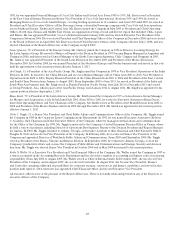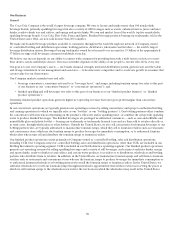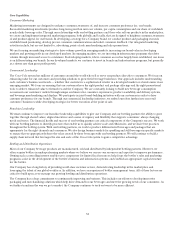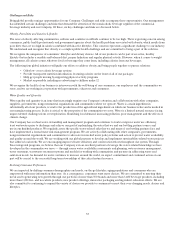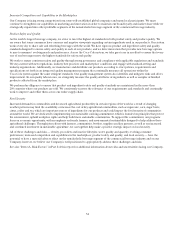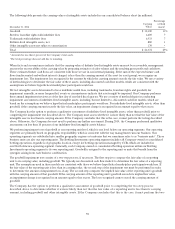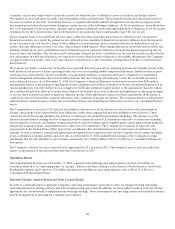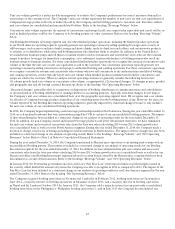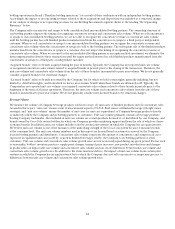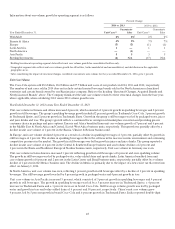Coca Cola 2014 Annual Report Download - page 37
Download and view the complete annual report
Please find page 37 of the 2014 Coca Cola annual report below. You can navigate through the pages in the report by either clicking on the pages listed below, or by using the keyword search tool below to find specific information within the annual report.35
Critical Accounting Policies and Estimates
Our consolidated financial statements are prepared in accordance with accounting principles generally accepted in the United States,
which require management to make estimates, judgments and assumptions that affect the amounts reported in our consolidated
financial statements and accompanying notes. We believe our most critical accounting policies and estimates relate to the following:
• Principles of Consolidation
• Recoverability of Noncurrent Assets
• Pension Plan Valuations
• Revenue Recognition
• Income Taxes
Management has discussed the development, selection and disclosure of critical accounting policies and estimates with the Audit
Committee of the Company’s Board of Directors. While our estimates and assumptions are based on our knowledge of current events
and actions we may undertake in the future, actual results may ultimately differ from these estimates and assumptions. For a discussion
of the Company’s significant accounting policies, refer to Note 1 of Notes to Consolidated Financial Statements.
Principles of Consolidation
Our Company consolidates all entities that we control by ownership of a majority voting interest as well as variable interest entities
for which our Company is the primary beneficiary. Generally, we consolidate only business enterprises that we control by ownership
of a majority voting interest. However, there are situations in which consolidation is required even though the usual condition
of consolidation (ownership of a majority voting interest) does not apply. Generally, this occurs when an entity holds an interest
in another business enterprise that was achieved through arrangements that do not involve voting interests, which results in a
disproportionate relationship between such entity’s voting interests in, and its exposure to the economic risks and potential rewards of,
the other business enterprise. This disproportionate relationship results in what is known as a variable interest, and the entity in which
we have the variable interest is referred to as a “VIE.” An enterprise must consolidate a VIE if it is determined to be the primary
beneficiary of the VIE. The primary beneficiary has both (1) the power to direct the activities of the VIE that most significantly impact
the entity’s economic performance, and (2) the obligation to absorb losses or the right to receive benefits from the VIE that could
potentially be significant to the VIE.
Our Company holds interests in certain VIEs, primarily bottling and container manufacturing operations, for which we were not
determined to be the primary beneficiary. Our variable interests in these VIEs primarily relate to profit guarantees or subordinated
financial support. Refer to Note 11 of Notes to Consolidated Financial Statements. Although these financial arrangements resulted
in our holding variable interests in these entities, they did not empower us to direct the activities of the VIEs that most significantly
impact the VIEs’ economic performance. Our Company’s investments, plus any loans and guarantees, related to these VIEs totaled
$2,274 million and $2,171 million as of December 31, 2014 and 2013, respectively, representing our maximum exposures to loss. The
Company’s investments, plus any loans and guarantees, related to these VIEs were not significant to the Company’s consolidated
financial statements.
In addition, our Company holds interests in certain VIEs, primarily bottling and container manufacturing operations, for which we
were determined to be the primary beneficiary. As a result, we have consolidated these entities. Our Company’s investments, plus any
loans and guarantees, related to these VIEs totaled $266 million and $284 million as of December 31, 2014 and 2013, respectively,
representing our maximum exposures to loss. The assets and liabilities of VIEs for which we are the primary beneficiary were not
significant to the Company’s consolidated financial statements.
Creditors of our VIEs do not have recourse against the general credit of the Company, regardless of whether they are accounted for as
consolidated entities.


